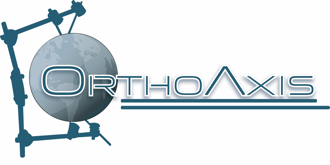Product Overview
These next-generation locking plates enhance flexibility during surgery, with polyaxial screw placement (30°) cone and improved angular stability. Equipped with a locking screw technology, the MIS enabled NCB Polyaxial Locking Plate System offers options to deal with complex fractures of the Proximal Humerus, the Distal Femur and the Proximal Tibia. All NCB Plates are made of Protasul ®-64 Titanium Alloy.
• Polyaxiality
The NCB Plate Technology allows polyaxial screw placement (30° cone) with screw locking achieved through the use of locking caps that are threaded into the plate holes. The locking construct improves stability especially in poor bone quality.
• Bone Quality Feedback
In all NCB Plates, the angular stability is achieved using the NCB Locking Caps over the NCB Screws. NCB Screws are not threaded into the NCB Plates which allows surgeons to get tactile feedback of bone quality when tightening NCB Screws.
• Fracture Reduction
Before locking, NCB Screws can act as lag screws. Therefore, NCB Screws can be used for fracture reduction and apply interfragmental compression.
• Non-Contact Bridging
In the locked mode the NCB Plate acts as an internal fixator without contact between the plate and the bone surface, which may reduce the risk of impairment to the periosteal blood supply. This Non-Contact Bridging concept can also be controlled through the use of 1, 2 or 3mm spacers, which are threaded into the plate holes prior to plate insertion.
Enhanced Diaphyseal Fixation
Divergent screw alignment for increased pull-out resistance in the diaphyseal region, even with the MIS Targeting Device.
• Screw Options
The NCB Screws (solid and cannulated) are available with different types of screw thread, for cortical or cancellous bone. The screws designed for cortical bone have an increased core diameter and are machined-tooled with a double lead thread for fast insertion. Cannulated screws can be placed with high precision – no predrilling is required as they are self-drilling and self-tapping. 4.5mm cancellous and 4.0mm cortical screws are available.
• MIS Technique
The percutaneous plate and screw insertion technique continues Zimmer’s success in devising Minimally Invasive Solutions™ procedures. Requiring a smaller than normal incision, there is less damage to surrounding soft tissue and a reduced risk of complications with wound healing.
• Cable Fixation Options
The products from the Zimmer® Cable-Ready® Cable Grip System are compatible with the NCB Polyaxial Locking Plate System.
• NCB Proximal Humerus Plate
Oblique holes x 2mm can be used for sutures after plate osteosynthesis.
• NCB Proximal Tibia Plate
Two versions of the NCB PT Plate are available:
2-proximal and 3-proximal holes. Plate head has 6° posterior tilt to match the lateral tibial contour.
• NCB Distal Femur Plate
The polyaxiality of the system allows some varus/valgus correction during surgery. For this purpose insert four screws as shown in the figure without tightening the screws. Place the two distal screws anterior and posterior.
Now the fracture can be reduced by rotation around the bone axis of the proximal fragment and varus/valgus correction of the distal fragment.
(https://www.zimmerbiomet.com/)







